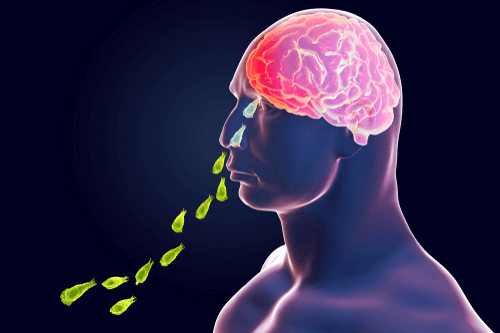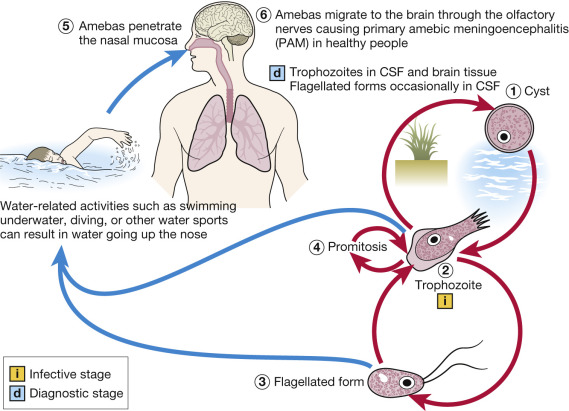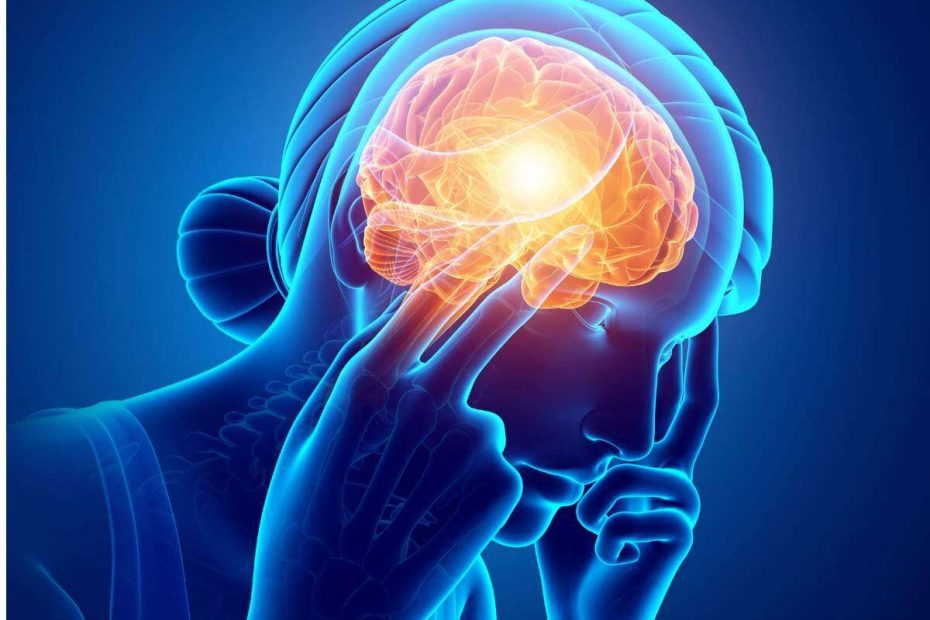Naegleriasis is a rare but almost always fatal brain infection caused by Naegleria fowleri also known as brain-eating amoeba. This amoeba is commonly found in the warm freshwater (lakes, rivers and hot springs) and soil. This extremely tiny organism causes Primary Amoeba Meningoencephalitis (PAM).

This brain-eating amoeba (organism) usually infects people when contaminated water enters the body through the nose. From the nose, this amoeba travels to the brain where it causes PAM. This organism can also be seen in inadequately chlorinated swimming pool. No one gets infected by drinking or swallowing water containing Naegleria fowleri.

SYMPTOMS OF NAEGLERIASIS
When the infected water enters the nose, it travels to the brain and start eating the brain cells. Symptoms starts 1-9 days after swimming in Naegleria-containing water. People die 1-18 days after the symptoms begin. This disease is quite difficult to detect because it progresses rapidly. Signs and symptoms of the infection are in 2 stages:
Stage 1:
- Severe frontal headache
- Nausea
- Vomiting
- Fever
Stage 2:
- Neck stiffness
- Seizure
- Altered mental status
- Hallucination
- Coma
HOW IS NAEGLERIASIS DIAGNOSED
Owning to rarity of this condition, 75% of the cases are appropriately diagnosed after the patient’s death. When Naegleriasis is suspected, your doctor might request for the following investigations:
- Brain imaging like CT or MRI
- Cerebrospinal fluid analysis under microscope using Giemsa-Wright stain or modified Trichome-stain. The motile amoeba is seen under the microscope with this stain.
TREATMENT AND STORY OF SURVIVORS
After 35 years without a Naegleria survivor in the United States, during the summer of 2013, two children with Naegleria fowleri infection survived. The first, a 12-year-old girl, was diagnosed with PAM approximately 30 hours after becoming ill and was started on the recommended treatment within 36 hours. She also received the investigational drug miltefosine, and her brain swelling was aggressively managed with treatments that included therapeutic hypothermia (cooling the body below normal body temperature). This patient made a full neurologic recovery and returned to school. Her recovery has been attributed to early diagnosis and treatment and novel therapeutics including miltefosine and hypothermia.
The second, 8-year-old, child is also considered a PAM survivor, although he has suffered what is likely permanent brain damage. He was also treated with miltefosine but was diagnosed and treated several days after his symptoms began. Therapeutic hypothermia was not used in this case.
In the summer of 2016, a 16-year-old boy was reported as the 4th U.S. PAM survivor. This patient was diagnosed within hours of presentation to the hospital and was treated with the same protocol used for the 12-year-old 2013 survivor. This patient also made a full neurologic recovery and returned to school.
PREVENTION OF NAEGLERIASIS
The only way to prevent this infection is by staying away from water related activities. However, if the pool is well treated and maintained, one cannot be infected.
Likewise, avoid swimming in open rivers or lake.
Further reading:
https://www.medindia.net/patients/patientinfo/naegleriasis.html
https://www.cdc.gov/parasites/naegleria/prevention.html

